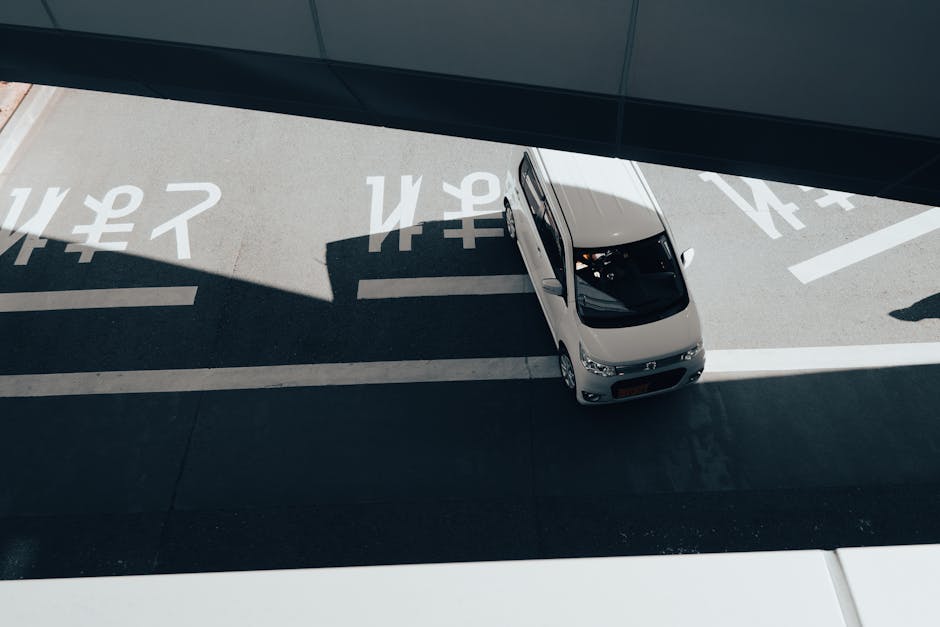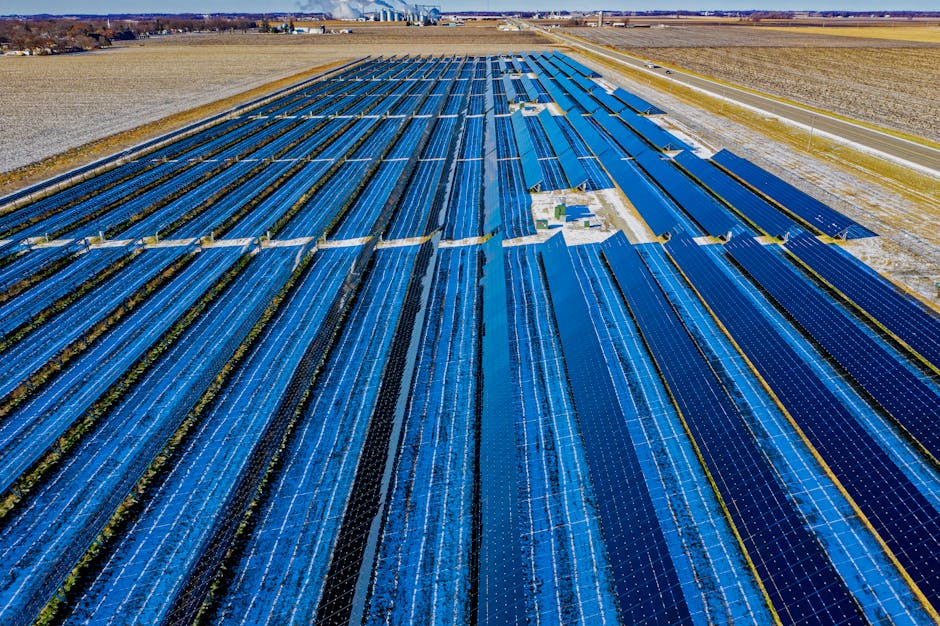How Autonomous Electric Vehicles Are Shaping Urban Architecture
Imagine a world where cars whisk you seamlessly to your destination while you sip coffee, read a book, or catch up on emails. This is the promise of autonomous electric vehicles (EVs), which are revolutionizing not just the way we travel but also how our cities are designed. The intersection of autonomous EV technology and urban architecture is poised to inspire innovative building designs that prioritize sustainability, efficiency, and community well-being. Let’s delve into how this nascent technology is setting the stage for a new era in urban living.
The Convergence of Autonomous Vehicles and Urban Design

The autonomization of vehicles goes hand in hand with significant shifts in urban design philosophy. As cities grapple with issues like traffic congestion, pollution, and urban sprawl, the advent of self-driving electric cars presents an opportunity to rethink city infrastructure. It’s not just about creating smart tech for cars; it’s about reinventing entire urban ecosystems where these vehicles can thrive.
Rethinking Parking Spaces

One of the most compelling changes to urban architecture driven by autonomous vehicles is the reconfiguration of parking spaces. Currently, a significant portion of urban land is dedicated to parking lots and garages. With the rise of autonomous EVs, these spaces can be drastically reduced. Self-driving cars, when not in use, can park themselves in optimized locations, perhaps even outside urban centers, where congestion and real estate costs are high.
By repurposing these underutilized spaces, cities can convert them into green parks, community gardens, or multipurpose facilities that enhance urban life. Imagine walking through a city where formerly crowded parking lots have become vibrant community hubs.
Modular Design for Flexibility

Autonomous EV technology inspires a shift towards modular building designs. Urban centers can incorporate flexible spaces that adapt to fluctuating needs—commercial during peak hours, transforming into community areas or residential spaces in off-peak times. This versatility is crucial in urban environments where the population density is high yet constantly changing.
As architects and urban planners incorporate autonomous vehicles' operational realities into their designs, we may see the emergence of structures that serve multiple purposes, tailoring environments to the lives of people living and working in those spaces.
Integration of Smart Infrastructure

For autonomous electric vehicle technology to flourish in urban settings, cities will need to implement intelligent infrastructure. Smart traffic lights, dynamic signage, and real-time communication between vehicles and urban systems will become standard components of our cities.
Tech-savvy Street Layouts

Cities might develop street layouts that prioritize autonomous transportation. Dedicated lanes for self-driving vehicles could help regulate traffic flow and reduce accidents. Pedestrian walkways, green spaces, and bike lanes can coexist alongside these focused paths, promoting a more holistic approach to urban transport.
Cities such as Singapore and Los Angeles are already piloting innovations in smart infrastructure. These initiatives will ultimately pave the way for a responsive, adaptive urban landscape that evolves with residents’ needs while reducing road congestion and emissions. As urban planners embrace such technologies, the resultant infrastructures will reflect a forward-thinking vision that harmonizes technology and nature.
Sustainability and Eco-friendly Urbanization

As urban areas increasingly prioritize sustainability, autonomous electric vehicles will play a crucial role. EVs produce fewer emissions than their gasoline counterparts, and as cities reduce their reliance on fossil fuels, the architectural approach to energy-efficient buildings will also become pivotal.
Green Building Design

The integration of green building practices in new architecture will reflect this shift. Rooftop gardens, solar panels, and rainwater collection systems are just a few examples of how buildings can reduce their environmental impact. With autonomous EVs facilitating access to renewable energy sources, a community can strive towards self-sufficiency.
Cities such as Amsterdam are leading the way with extensive cycling paths and EV charging infrastructure. These trends not only decrease emissions but foster an active lifestyle among residents, aligning with the global movement towards health and well-being.
Urban Micro-Mobility Solutions

Further pushing this sustainability narrative is the rise of micro-mobility. Cities are witnessing the rapid adoption of e-scooters, e-bikes, and other small electric vehicles, complementing autonomous EVs. These solutions enhance urban mobility while reducing traffic and pollution levels.
Urban architecture, too, can adapt to accommodate micro-mobility. Design elements like scooter parking stations and bike racks can be seamlessly integrated into the urban fabric, allowing for smooth transition between different modes of transport.
Managing Noise Pollution

One remarkable aspect of autonomous electric vehicles is their whisper-quiet operation compared to conventional gasoline vehicles. This shift in transport modality has substantial implications for noise pollution levels in urban areas.
Creating Soundscapes

Reduced noise from transportation can enhance the quality of life in cities. This change encourages architects to reimagine urban design with an emphasis on serenity—creating spaces that support relaxation and social interaction amid the hustle and bustle of city life.
Future developments may reflect biophilic design principles, incorporating greenery that not only beautifies neighborhoods but also serves as sound dampening elements, fostering a calming urban environment. Urban planners can harness and manipulate these soundscapes to prioritize not just the aesthetic but also the psychological well-being of city dwellers.
The Role of Mixed-Use Developments

Following the autonomous EVs’ development, urban planners and architects are increasingly inclined toward mixed-use developments. This approach promotes the coexistence of residential, commercial, and recreational spaces within a compact footprint, reducing the need for lengthy commutes.
Enhancing Accessibility and Community

With autonomous vehicles providing seamless transportation solutions, mobility becomes democratized. Every resident gains improved access to amenities, jobs, and services, strengthening community ties. Additionally, these developments can integrate social spaces designed for interaction and community engagement, fostering a sense of belonging among residents.
Moreover, less time spent navigating traffic and searching for parking translates to more time spent building connections. The symbiotic relationship between autonomous EV technology and mixed-use developments is reshaping not only how cities function but also how people live and interact.
Implications for Future Urban Life

The ascent of autonomous electric vehicles continues to challenge conventional wisdom about urban planning. Cities that have long struggled with overcrowding, pollution, and infrastructure strain can harness this technology to imagine, create, and implement transformative changes.
Education and Workforce Development

As urban architecture evolves, so too will the job landscape. Skills relevant to designing and maintaining smart infrastructure, sustainable buildings, and autonomous vehicle technology will become more sought after. Thus, education systems must adapt to these changes, preparing the workforce for future challenges.
Universities and technical institutions can embed courses focused on sustainable architecture, urban planning, and renewable energy management to equip students with necessary, future-oriented skills. The partnership between educational institutions and urban developers can foster innovative solutions meeting both community needs and workforce demands.
Ethics and Accessibility
As cities embrace these advanced technologies, it’s paramount to ensure that the benefits are backed by ethical considerations. As innovations evolve, discussions surrounding inclusivity, access, and equity must accompany any new developments. Autonomous vehicles have the potential to serve as a public transport alternative; their implementation must take into account diverse demographics, ensuring no groups are left behind.
Increased dialogue around ethics in technology adoption in urban spaces will not only promote equality but also build trust within communities. Engaging stakeholders—like residents, urban planners, and tech companies—in the planning process is essential.
The Global Perspective
Countries around the world are embracing when it comes to harnessing the benefits of autonomous EV technology for architectural innovation. A concerted global effort is needed to address challenges cities across the world encounter, and lessons learned from successful implementations can guide others.
Research studies as reported by Harvard Business Review reveal that cities that innovate and adapt to new technologies not only promote economic growth but also enhance viability for future generations. The smarter cities become, the more they create opportunities for collaboration, investment, and sustainable development.
Final Thoughts
The future transforms urban architecture into a harmonious blend where autonomous electric vehicles are central to new cityscapes. As we collectively embrace this paradigm shift, we have the opportunity to create urban environments that prioritize sustainability, community bonding, and individual well-being.
This ongoing evolution is not merely about the vehicle itself, but about the broader urban encasement in which it operates. As cities leverage autonomous technology, they will emerge not only as smarter but happier places to live. Therefore, embracing these changes means investing in our shared urban future—one that adapts, innovates, and provides everyone an avenue towards a bright, sustainable path ahead.



